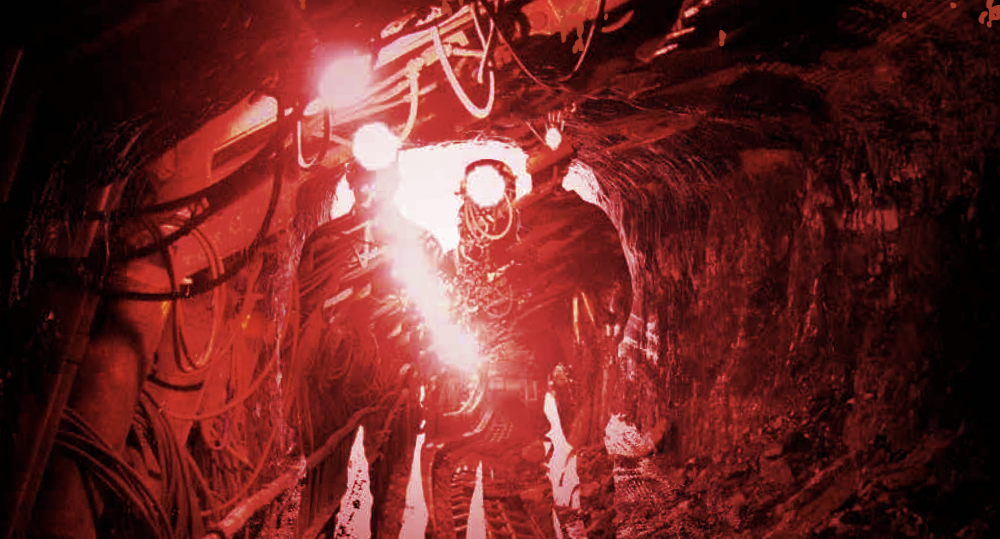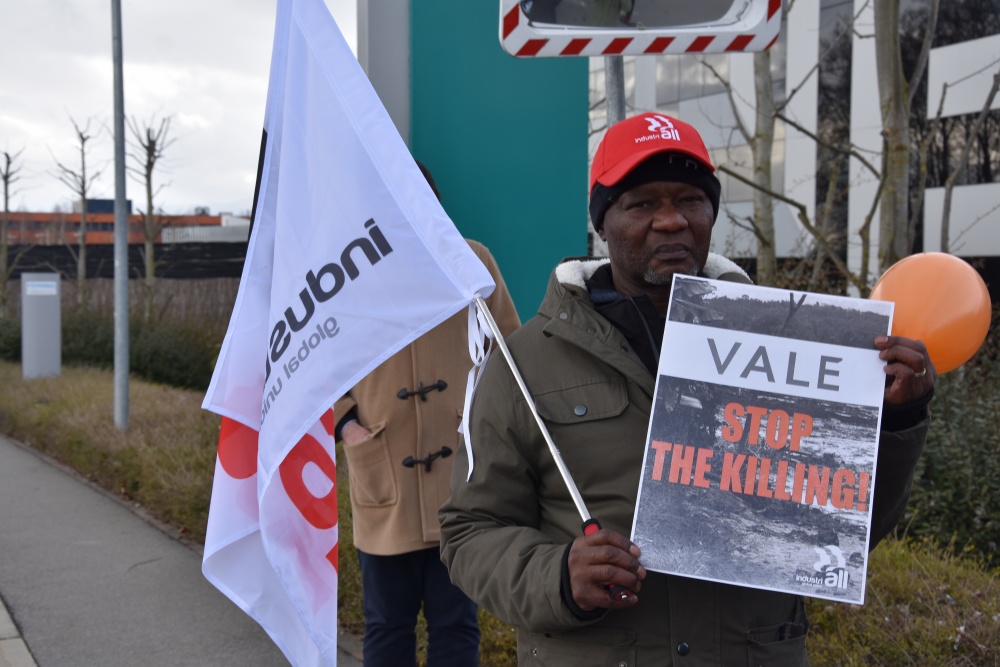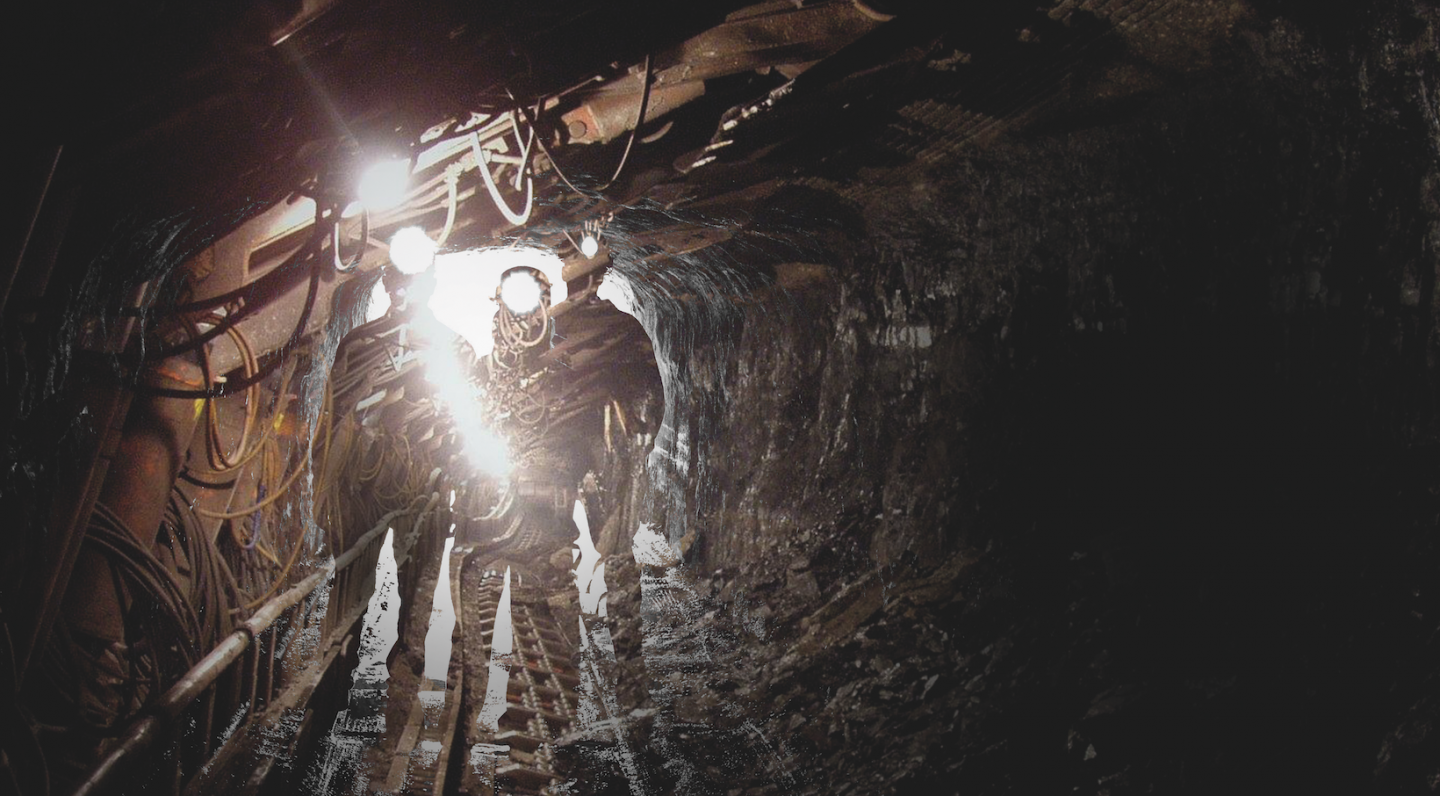20 May, 2019Despite labour regulations and the efforts of unions, mining accidents take the lives of thousands of workers every year around the world and seriously damage the environment. Why is mining still so dangerous?
Text: Kimber Meyer, Léonie Guguen, Walton Pantland
A methane gas explosion in a coal mine in Pakistan kills four workers, and traps another 40 underground. In Zimbabwe, 28 artisanal miners drown when the gold mine they are working in floods. An open cast mine in the Congo collapses. An explosion kills 304 at Soma in Turkey. Miners are trapped in a copper mine in Chile, coal miners in New Zealand and West Virginia are killed in accidents. In Brazil, as many as 300 people die when the Brumadinho tailings dam collapses. Explosion. Collapse. Flooding. Fire. Carbon monoxide poisoning. Lost bodies underground that are never retrieved. Grieving relatives who have no closure.
Miners die every day in China’s coal mines, while in Pakistan, accidents happen every week, in almost identical circumstances: a methane gas explosion in an illegal or unofficial mine, with no emergency service at hand, medical assistance, or protocol for dealing with accidents. Miners dig their colleagues out of the ground and give them first aid.
We face a numbing daily litany of terrible mining accidents, most so routine they are difficult to tell apart, barely making the local news. Mining is always going to be more dangerous than office work. But this inherent danger, and the relentless drumbeat of death, induces a fatalism, and is an obstacle to attempts to make mining safer. Miners are expected to accept that dying at work is part of the job.
And those who do make it to the surface face a host of diseases and injuries. Silicosis. Black lung. Lost limbs. A toxic environment that poisons the local community.
Occupational diseases kill more people than accidents. People have thousands of years of experience and expertise in mining. Surely by now we know how to stop so many workers dying?
The truth is that we do. But it is cheaper to kill workers than to make mines safer.

It is entirely possible to process mine tailings safely, but it costs more. Mines can be reinforced to prevent collapse, but this takes time
The biggest obstacle to mine safety – the reason so many miners die at work – is profit. It is entirely possible to process mine tailings safely, but it costs more. Mines can be reinforced to prevent collapse, but this takes time. Safety is expensive, and would make some marginal mines uneconomic. But can we allow companies to kill workers to haul the last remnants of an exhausted seam to the surface?
We have traffic lights, lanes for vehicles travelling in different directions and rules to make roads safer, instead of just expecting drivers to be careful. The way to make mining safer is to put systems in place, instead of allowing dangerous conditions to persist and then accusing mineworkers of carelessness when accidents happen.
The knowledge of how to make mining safer has been collated into codes of practice, guidelines, and ultimately, ILO Convention 176 on Health and Safety in Mines. Adopted in 1995, C176 sets out a framework for countries to create a safe mining environment, with requirements for companies and rights for workers. This means creating a legal framework, developing expertise in safety, and building an inspection mechanism that can enforce safety and sanction offenders.
Crucially, for workers this means:
The right to know and understand the dangers
The right to refuse dangerous work
The right to participate fully in health and safety decision making
Only 33 countries have ratified C176, with Pakistan and China notably absent. Creating inspection and enforcement mechanisms is expensive, and powerful mining lobbies are resistant. We need to assert that miners’ lives are more important than profit. The key to changing safety culture in the mining industry is to agree to a global standard on mine safety – C176 – and enforce it with powerful unions and well-trained union safety representatives.
The stronger the union, the safer the mine.
The case of Brumadinho
Barely a few months have passed since the Brumadinho mining tragedy, which killed 209 people and left 97 missing in the state of Minas Gerais, Brazil. On 25 January 2019, Vale’s Corrego do Feijão tailings dam burst, and the human and environmental consequences shocked Brazil and the entire world.
A red deluge of 13 million cubic metres of mud and toxic mining waste washed away everything in its path. An entire community was swamped and the use of untreated water from the Paraopeba River was suspended after the detection of metals at levels above what is allowed by environmental legislation.
The Brumadinho tailings dam failure is probably the worst industrial accident in the country’s history. It happened three years after a similar disaster in Mariana, also in Minas Gerais, when a dam belonging to the mining company Samarco Mineração, owned by Vale and BHP Billiton, collapsed on 5 November 2015. Nineteen people lost their lives and the mining waste reached the Doce River, a source of drinking water in southeast Brazil.
At the time, BHP Billiton issued a statement confirming that Samarco had signed a preliminary commitment with Brazilian prosecutors, assigning millions of dollars to finance a series of emergency and safety measures that included prevention, mitigation, correction and compensation for the environmental and social consequences of the incident.
Nevertheless, history repeated itself. What went wrong?
Although officials vowed to adopt strict safety protocols in their dams, that never happened. Unions allege that Vale knew about possible safety problems at other dams, but ignored the warning signs.
The Public Prosecutor’s Office for the state of Minas Gerais (MPMG) announced the opening of an investigation into Vale for corruption, on suspicion that its managers could have deceived the country’s authorities when it said it didn’t know about the safety risks posed by the dam that collapsed in Brumadinho.
So as not to hinder the process, the MPMG, together with the Federal Prosecutor’s office and the regional and Federal Police, recommended, on 1 March, that Vale temporarily suspend its CEO, Fabio Schvartsman, together with eight other managers and four people involved in the company’s risk management. The company complied.
The investigation confirmed the existence of a conflict of interest between the mining company and service providers with regard to the auditing of dam safety, allowing the external auditors to be pressured and threatened. This resulted in the undue reduction of the minimum safety factor standards used to assess the stability of the Corrego do Feijão dam in Brumadinho.
Brazil’s National Mining Agency began checking if other dams, similar to the one at Brumadinho, are at risk of collapse. There are 88 upstream tailings dams in Brazil built in the same way. The Agency has since banned the operation of some, ordering them to be removed by 2021.
The Brazilian Senate has approved a bill that would impose a series of measures to improve dam safety, in addition to requiring new monitoring technology and detailed emergency plans. The bill is now before the Chamber of Deputies.
Valter Sanches, general secretary of IndustriALL Global Union, explained:
“In Brazil there are currently several regulations on the way, emanating from the Minas Gerais state or federal governments, and they have removed dams that were in a similar condition. They took action after two very serious accidents.
“It is important to mention that in other parts of Brazil, Vale uses different retention methods that are dry and work well. Why do they do it in Pará (in the north of Brazil) and not in Minas Gerais? Because iron ore mining is cheaper than alumina, manganese and other minerals which are higher in value, covering the cost of the dry system which is more expensive, but not as risky.”

The response of unions
Protest against Vale, Switzerland, January 2019. IndustriALL
After the Mariana and Brumadinho tragedies, trade unions, both in Brazil and all around the world, have taken a number of different initiatives.
On 26 March 2018, IndustriALL together with Building and Wood Workers’ International (BWI) filed a complaint against BHP Billiton and Vale under the OECD Guidelines for Multinational Enterprises.
This complaint was also signed by BWI affiliate, the Trade Union of the Construction, Concessions and Engineering Consultancy Industries of the State of Minas Gerais (SITICOP), and by IndustriALL’s Brazilian affiliate, CNQ-CUT.
The complaint refers to the consequences of the collapse of the dam in Mariana, and identifies violations of the OECD Guidelines for Multinational Enterprises by Vale S.A. and BHP Billiton.
The companies failed to:
Provide adequate remedy and establish a legitimate remediation process involving affected communities and workers
Respect trade union rights
Ensure observance of adequate health and safety standards, including respect for laws on working time
Act with due diligence to procure the involvement of stakeholders, including trade unions
Almost a year after filing the complaint, disaster struck in Brumadinho. IndustriALL and the BWI immediately reprimanded the company for failing to heed the guidelines of the International Council on Mining and Metals concerning the prevention of catastrophic failure of tailings storage facilities, published after the collapse of the Mariana dam.
The global unions complained that the company also failed to adhere to standards for tailings dam management outlined by the multistakeholder Initiative for Responsible Mining (IRMA).
The unions demanded that Vale must greatly improve safety, consult with trade unions and civil society, and compensate the victims in an expeditious and fair manner in Brumadinho.
The co-chair of IndustriALL’s mining sector and CNQ/CUT union president, Lucineide Varjão, said:
“There is an urgent need for a new model of mineral exploitation to ensure the participation of people and workers, which gives foremost priority to the environment and society. Grievous events like these are not just in Brazil, they are part of the movement of capital for profit. Companies are becoming less and less concerned with production, and more with finance. Thus mobilization and trade union organization has to be supranational.
“That is why we have to continue to denounce and fight against the unbridled release of environmental licenses, and audits being placed in the hands of mining companies. We fight against that unbridled ambition for profit. Tragic crimes like this teach us how valuable life is.”
What are tailings dams and why are they dangerous?
What are mine tailings?
Tailings are the waste products from mining. Mechanical and chemical processes are used to grind up rock into a fine sand to extract the valuable mineral or metal from the rock ore. All the unrecoverable and uneconomic remnants from this process are waste. They include finely ground rock particles, chemicals, minerals and water. Depending on the type of mining, tailings can be liquid, solid or a slurry of fine particles. Many substances found in tailings are toxic, even radioactive, and it’s not uncommon to find large amounts of cyanide, mercury and arsenic in tailings.
What are tailings dams?
Tailings dams are used to store water and waste that come as by products from the mining process. It is estimated there are at least 3,500 tailings dams around the world. But as there are around 30,000 industrial mines, the number of tailings dams is likely to be much higher.
Tailings dams can be huge in size, as big as lakes, and reach 300 metres high. As the slurry of waste is piped into the dam, the solids settle to the bottom and the water is recycled to be used in the separation process again.
Rather than reinforced concrete, tailings dams use earth or rock to create a barrage. However, most tailings dams use the cheaper but more dangerous upstream method of construction, using the tailings themselves to create a barrier. The dam is then continually raised to accommodate more waste. These dams are more unstable and more prone to leakage.
Tailings dams need regular maintenance and monitoring to ensure that there is sufficient drainage and the dam is strong enough to contain the mining waste.
Tailings dams can pose a threat to local wildlife as birds and animals bathe in and drink from the contaminated waters. Leakage of toxic substances from tailings dams can also cause damage to the immediate environment.
What are the consequences of collapse?
In the past ten years, there have been 31 recorded major tailings dams failures, not including the devastating failure of mining company Vale’s dam in Brumadinho, Brazil on 25 January 2019, in which 300 people are presumed dead.
In Canada, the Mount Polley copper-gold mine dam collapse in 2014 released 25 million cubic metres of wastewater and tailings into adjacent water systems and lakes. That’s enough to fill 20,000 Olympic swimming pools.
A year earlier, the mine’s owner, Imperial Metals, reported that the tailings dam contained 84,831 kilograms of arsenic, 38,218 kilograms of lead and 562 kilograms of mercury along with other minerals and waste products.
In 2015, the Samarco dam collapse in Brazil released 33 million cubic metres of iron ore tailings slurry into the environment, killing 19 people, displacing 600 families and contaminating waterways for 620 km downriver until it reached the ocean. It is feared that precious ecosystems and fish life that support indigenous communities will never recover.
There are also grave concerns for the safety of legacy tailing dams that are no longer used but still pose a considerable threat to life and the environment if they fail.
Are tailings dams necessary?
Traditional storage facilities, such as the ones involved in the Brumadinho and Samarco tragedies, are used by the mining industry simply because they are cheap. New technologies are available that substantially reduce or mitigate the risk associated with potential dam failures, such as the filtered tailings process, which reduces the amount of water to minimize volume and improve stability. Dry tailings disposal is another alternative that offers significant benefits in terms of environmental sustainability, as well as worker and community safety.
What can be done to improve tailings dam safety?
Tailings dam failures are not inevitable and can be prevented. Mining companies must listen to workers and unions, who are frequently the first to flag safety issues but too often ignored. IndustriALL Global Union has worked with the multisector Initiative for Responsible Mining Assurance (IRMA) to set the highest standards of tailings dam safety along with the International Council on Mining & Metals which has produced guidelines on preventing catastrophic failure of tailings storage facilities. The mining industry must urgently adhere to these standards to prevent future disasters.
